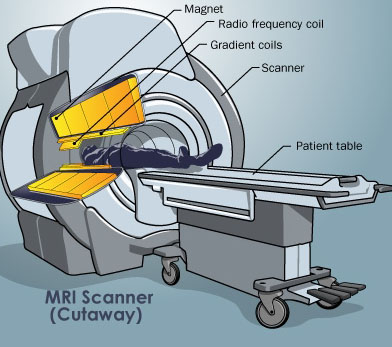

The biggest and most important component of an MRI system is the magnet. There is a horizontal tube -- the same one the patient enters -- running through the magnet from front to back. This tube is known as the bore. But this isn't just any magnet -- we're dealing with an incredibly strong system here, one capable of producing a large, stable magnetic field.
Most MRI systems use a superconducting magnet, which consists of many coils or windings of wire through which a current of electricity is passed, creating a magnetic field of up to 2.0 tesla. Maintaining such a large magnetic field requires a good deal of energy, which is accomplished by superconductivity, or reducing the resistance in the wires to almost zero. To do this, the wires are continually bathed in liquid helium at 452.4 degrees below zero Fahrenheit (269.1 below zero degrees Celsius). This cold is insulated by a vacuum. While superconductive magnets are expensive, the strong magnetic field allows for the highest-quality imaging, and superconductivity keeps the system economical to operate.





